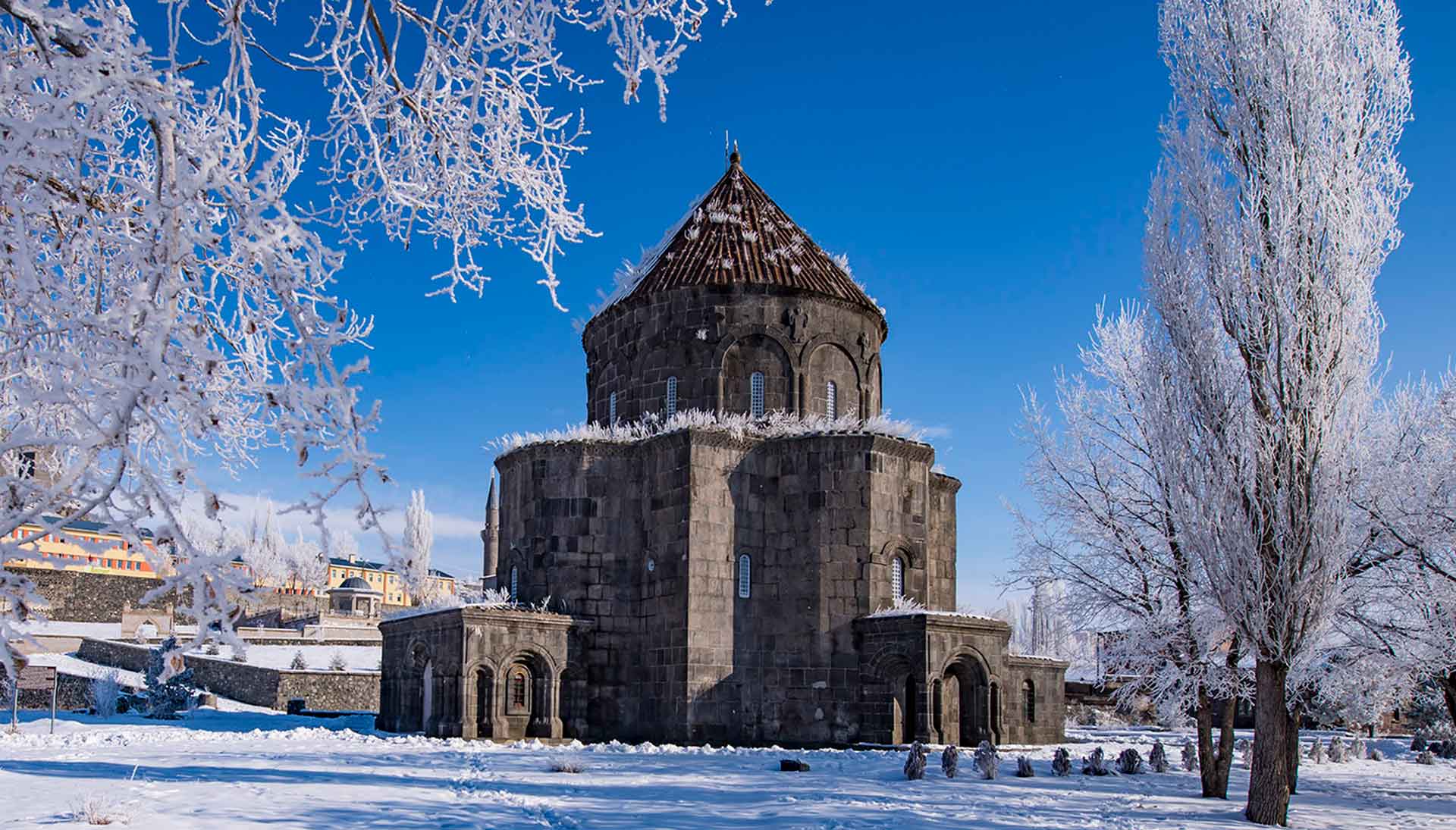Kumbet Mosque

Kumbet Mosque, formerly known as the 12 Apostles Church, is one of the important architectural works that has become the world-famous symbol of Kars in tourism. The church, which began being built by the Armenian King Abas in 932 AD, took about five years to complete.
If you go to Kaleiçi District to visit this precious relic, which has a history of more than a thousand years, you will see that it is waiting for you in the south of Kars Castle.
History of the 12 Apostle Church
The Bagratli Kingdom, which is connected to the Bagrat Dynasty, is the Armenian-Georgian kingdom that ruled in Kars and its vicinity in the 10th century and protected the city of Ani. The 12 Apostles Church was built by King Abas to commemorate the 12 Apostles. For this reason, it became one of the places of great importance for the Christian world.
According to some researchers, the real name of the 12 Apostles Church, which is a complete example of medieval architecture, is the Cathedral. Until the 19th century the name was mentioned as the Cathedral in many sources; however, due to the embossments on the dome of the building which was thought to symbolize the 12 Apostles, the church was later called The 12 Apostles Church.
The 12 Apostles or the Cathedral is one of the venues that continue to preserve its sacredness for Christians, being visited by foreign tourists coming to Kars from all over the world today.
History of Kars Kümbet Mosque
The Selçuks entered Anatolia in 1064 over the Caucasus, conquered Kars and converted the 12 Apostles church into a mosque. Although, many monuments were severely damaged in the region during the invasion by the Mongols before it was under the control of the Ottoman rule, we can say that the Kümbet Mosque was not effected much. Timur, who almost destroyed Kars Castle, did not touch the 12 Apostles Church, namely the Kümbet Mosque, perhaps because it was used as a mosque at that time.
After the Ottoman conquest of the city in 1579, it started to be used as a mosque. Kümbet Mosque was a sacred place where Muslims worshiped until the Ottoman-Russian War, known as the 93 War. After the Russians occupied the area, the church was once again converted. This time it starts to be used as the Orthodox Church.
In 1918, Kars again falls into Turkish hands. The 12 Apostles / Cathedral is once again converted into a mosque. Just a year later, in 1919, when the Turks withdrew from Kars, it was transformed into its first function, the Armenian Church. Once again in 1920 Kars was in the control of the Republic of Turkey and the church was converted to a mosque. It was used as a museum from the 1960s until 1981. It has been opened to the public as a mosque since 1993.
12 Apostles Church Architectural Plan
The basalt stone used in the construction of the church of the Apostles is the common point of the ancient architecture of the region. We can say that the smooth cut basalt stone is one of the impressive elements of the architecture of the region with its color and enormous masonry. The 12-year-old 12 Apostles Church, which has typical Armenian church characteristics, opens on a square background with four niches with round domes. The dome rises from the central square, and four apses surround the dome. The main entrance of the building is to the west of the church; There is also an entrance door in the south and north directions. The space is illuminated through the windows on the north-south facade.
Hagia Sophia of the East
The 12 Apostles Church with its domed basilica-type architecture that combines the central plan is known as the Hagia Sophia of the East because it is architecturally similar to the Hagia Sophia Mosque in Istanbul.
